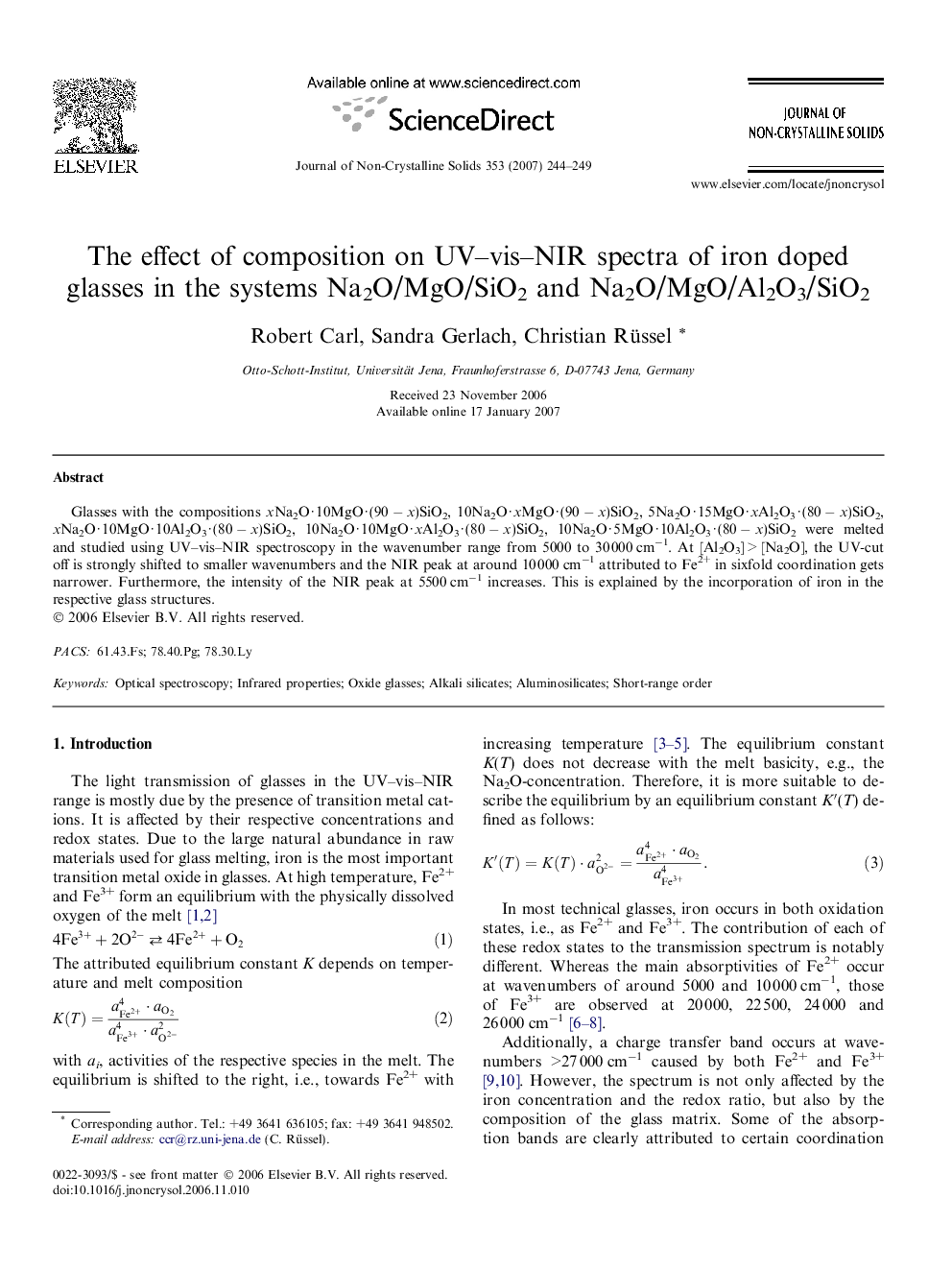| Article ID | Journal | Published Year | Pages | File Type |
|---|---|---|---|---|
| 1485691 | Journal of Non-Crystalline Solids | 2007 | 6 Pages |
Abstract
Glasses with the compositions xNa2O · 10MgO · (90 − x)SiO2, 10Na2O · xMgO · (90 − x)SiO2, 5Na2O · 15MgO · xAl2O3 · (80 − x)SiO2, xNa2O · 10MgO · 10Al2O3 · (80 − x)SiO2, 10Na2O · 10MgO · xAl2O3 · (80 − x)SiO2, 10Na2O · 5MgO · 10Al2O3 · (80 − x)SiO2 were melted and studied using UV–vis–NIR spectroscopy in the wavenumber range from 5000 to 30 000 cm−1. At [Al2O3] > [Na2O], the UV-cut off is strongly shifted to smaller wavenumbers and the NIR peak at around 10 000 cm−1 attributed to Fe2+ in sixfold coordination gets narrower. Furthermore, the intensity of the NIR peak at 5500 cm−1 increases. This is explained by the incorporation of iron in the respective glass structures.
Keywords
Related Topics
Physical Sciences and Engineering
Materials Science
Ceramics and Composites
Authors
Robert Carl, Sandra Gerlach, Christian Rüssel,
